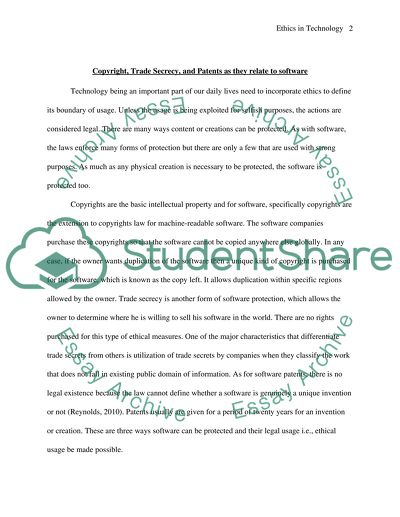Cite this document
(Copyright, Trade Secrecy, and Patents as They Relate to Software Term Paper, n.d.)
Copyright, Trade Secrecy, and Patents as They Relate to Software Term Paper. Retrieved from https://studentshare.org/information-technology/1601759-essay-on-ethics-in-technology
Copyright, Trade Secrecy, and Patents as They Relate to Software Term Paper. Retrieved from https://studentshare.org/information-technology/1601759-essay-on-ethics-in-technology
(Copyright, Trade Secrecy, and Patents As They Relate to Software Term Paper)
Copyright, Trade Secrecy, and Patents As They Relate to Software Term Paper. https://studentshare.org/information-technology/1601759-essay-on-ethics-in-technology.
Copyright, Trade Secrecy, and Patents As They Relate to Software Term Paper. https://studentshare.org/information-technology/1601759-essay-on-ethics-in-technology.
“Copyright, Trade Secrecy, and Patents As They Relate to Software Term Paper”, n.d. https://studentshare.org/information-technology/1601759-essay-on-ethics-in-technology.


